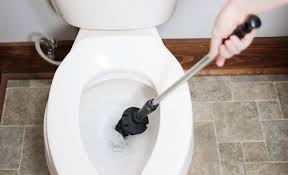A clogged drain toilet is one of the most common household plumbing issues. It can be frustrating, messy, and even embarrassing if not addressed promptly. Fortunately, with the right tools and techniques, you can often resolve the problem yourself without calling a plumber. This guide will walk you through the steps to unclog a toilet, prevent future blockages, and know when it’s time to seek professional help.First, let’s understand why toilets get clogged. Common causes include:
- Flushing excessive toilet paper
- Flushing non-flushable items like wipes, feminine hygiene products, or cotton balls
- Mineral buildup in pipes
- Tree roots invading sewer lines (in severe cases)
Before you begin, gather these essential tools:
- Plunger (a flange plunger works best for toilets)
- Rubber gloves
- Bucket
- Plumber’s snake or auger
- Baking soda and vinegar (for natural cleaning)
The first and most effective method is using a plunger:
- Ensure there’s enough water in the bowl to cover the plunger’s cup.
- Place the plunger over the drain opening, creating a tight seal.
- Push down gently at first to remove air, then pump vigorously 10-15 times.
- Quickly pull up to create suction. Repeat if necessary.
If plunging doesn’t work, try a toilet auger:
- Insert the auger’s end into the drain opening.
- Turn the handle clockwise while gently pushing forward.
- When you feel resistance, continue turning to break up or grab the clog.
- Carefully retract the auger, removing any debris.
For minor clogs, you might try a natural solution:
- Pour 1 cup baking soda followed by 2 cups vinegar into the bowl
- Let it fizz for 30 minutes
- Flush with hot water
To prevent future clogs:
- Educate household members about what shouldn’t be flushed
- Consider installing a bidet to reduce toilet paper use
- Regularly clean drains with enzyme-based cleaners
- Address slow drains before they become complete blockages

Warning signs that you need professional help include:
- Multiple fixtures backing up simultaneously
- Sewage odors coming from drains
- Water backing up in strange places
- Recurring clogs despite proper maintenance
Remember, while chemical drain cleaners are available, they can damage pipes and should be used sparingly. Mechanical methods like plunging and snaking are generally safer and more effective for toilet clogs.For particularly stubborn clogs, you might need to remove the toilet to access the drain pipe directly. This is more involved and may require:
- Turning off the water supply
- Emptying the tank and bowl
- Removing the bolts securing the toilet
- Lifting the toilet carefully to avoid breaking the seal or porcelain
If you live in an older home with cast iron pipes, be especially cautious as these are more prone to mineral buildup. Regular maintenance can help extend their lifespan.In apartment buildings, notify maintenance immediately if you suspect a main line clog, as this could affect multiple units. Never attempt to access building plumbing without proper authorization.Finally, consider upgrading your toilet if you frequently experience clogs. Modern low-flow toilets have improved significantly and many models now offer pressure-assisted flushing that handles waste more effectively.By following these steps and maintaining good habits, you can keep your toilet flowing freely and avoid the headache of a clogged drain toilet. Remember that prevention is always easier than dealing with an actual clog!
